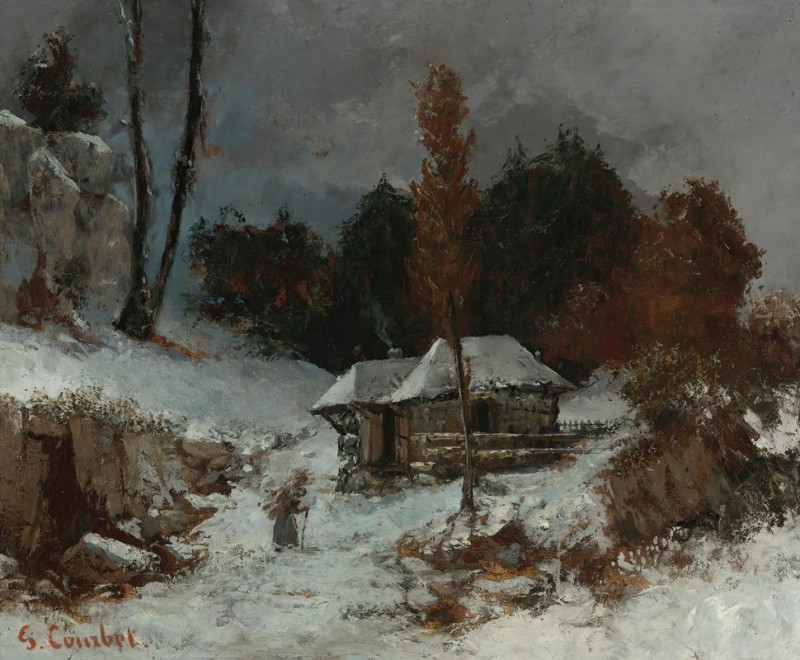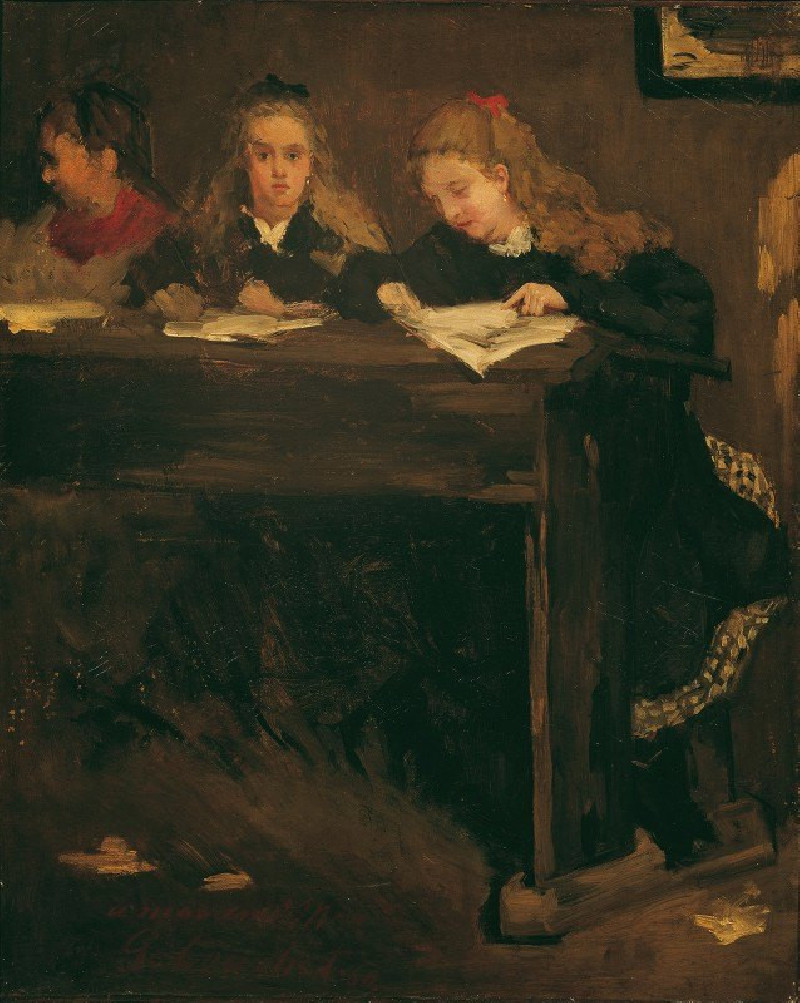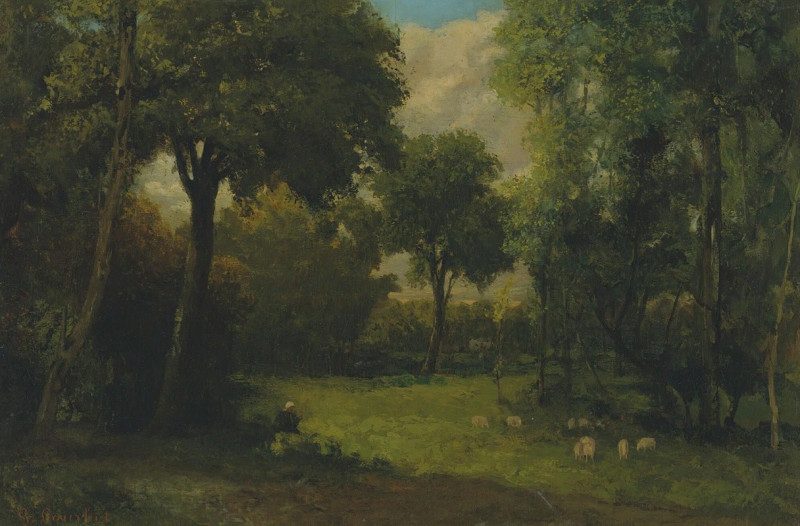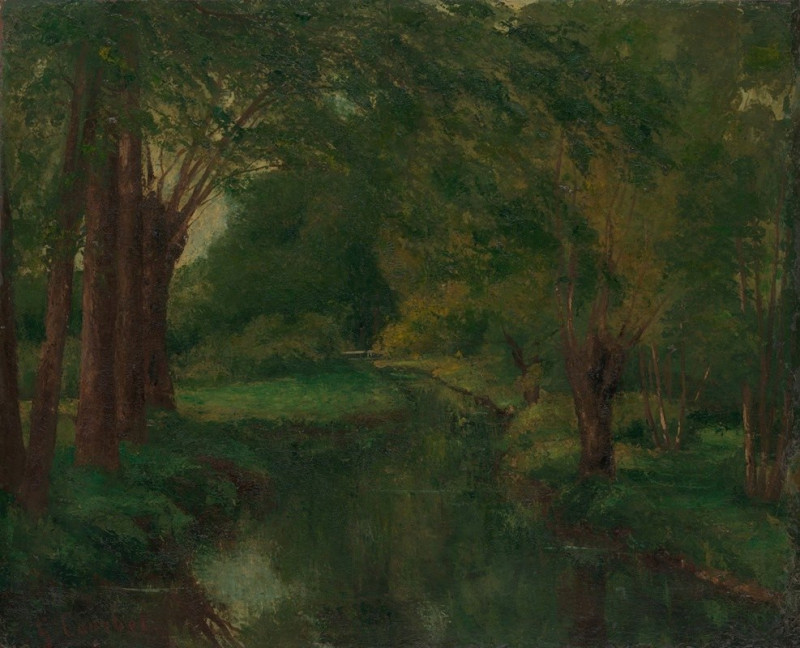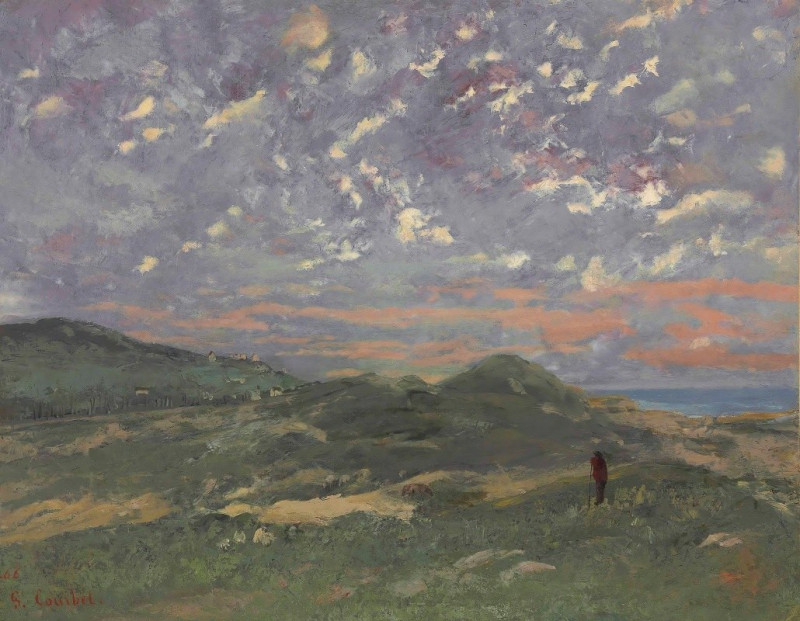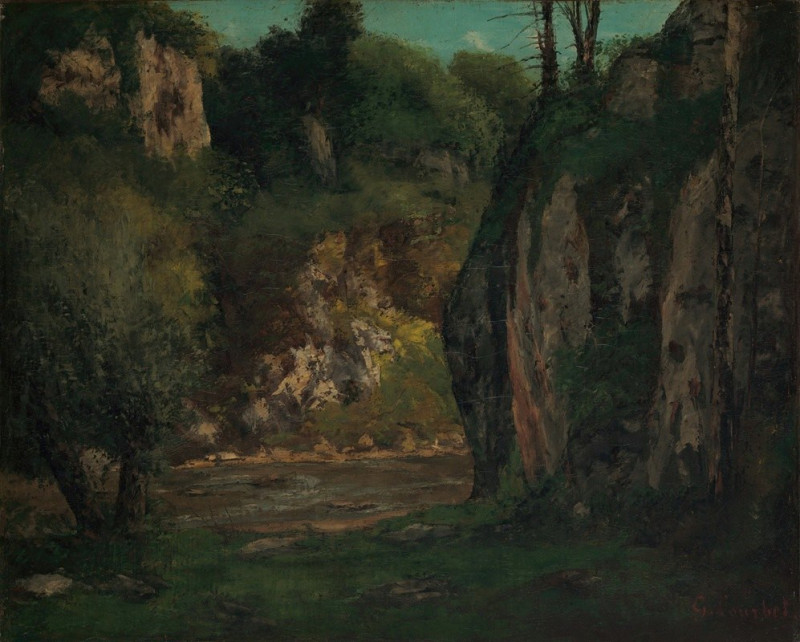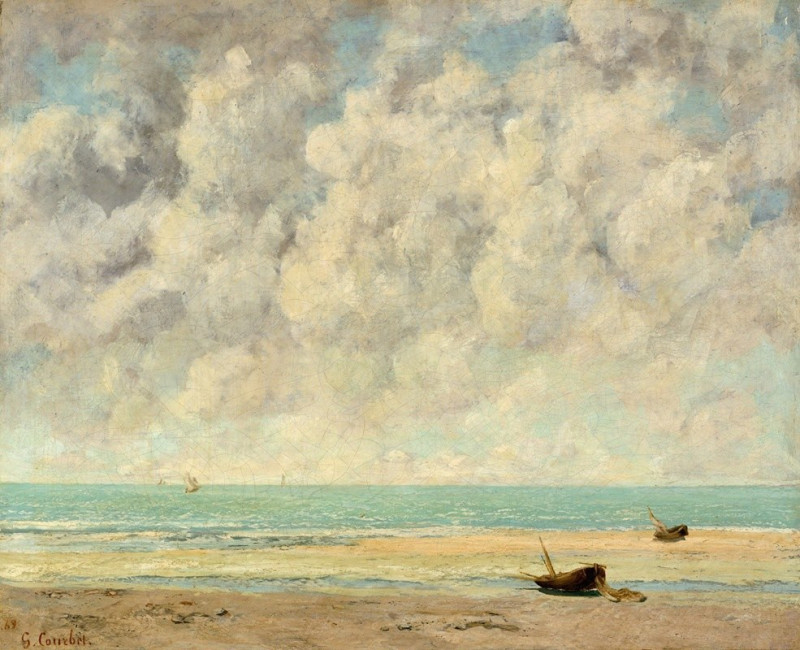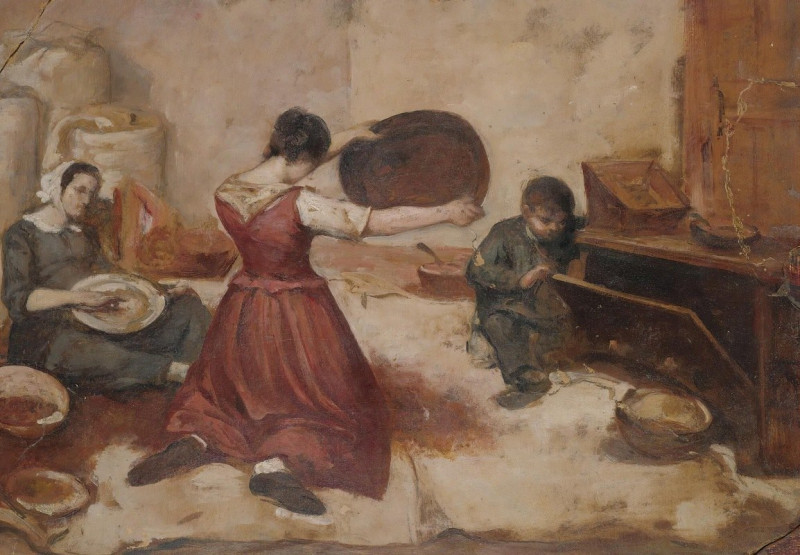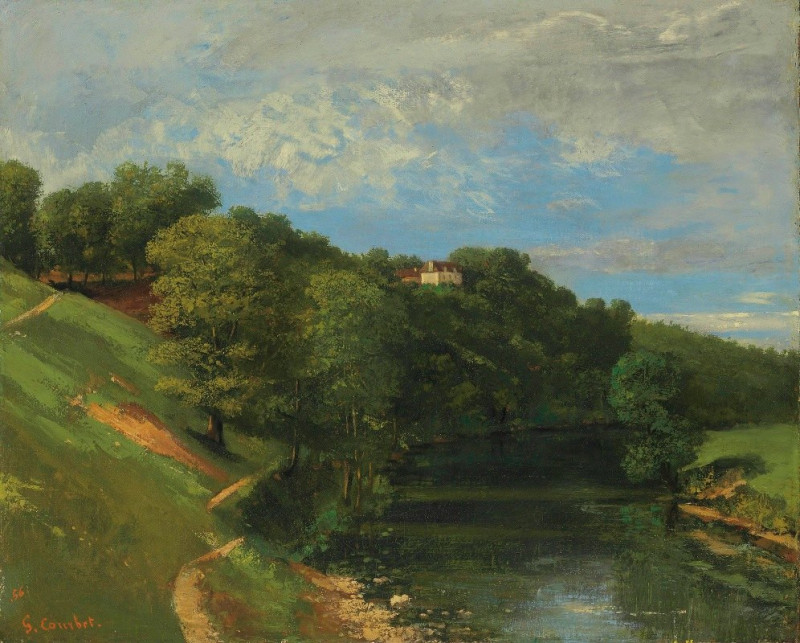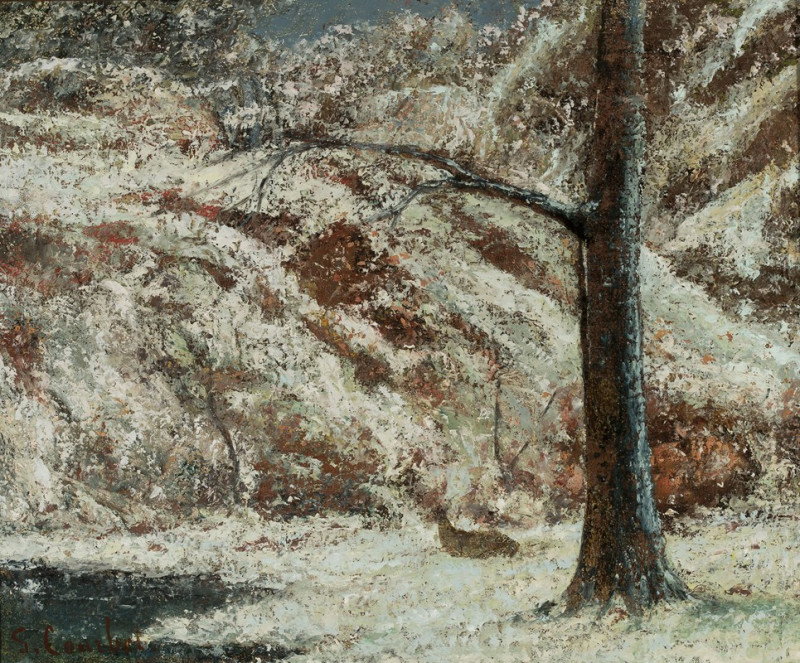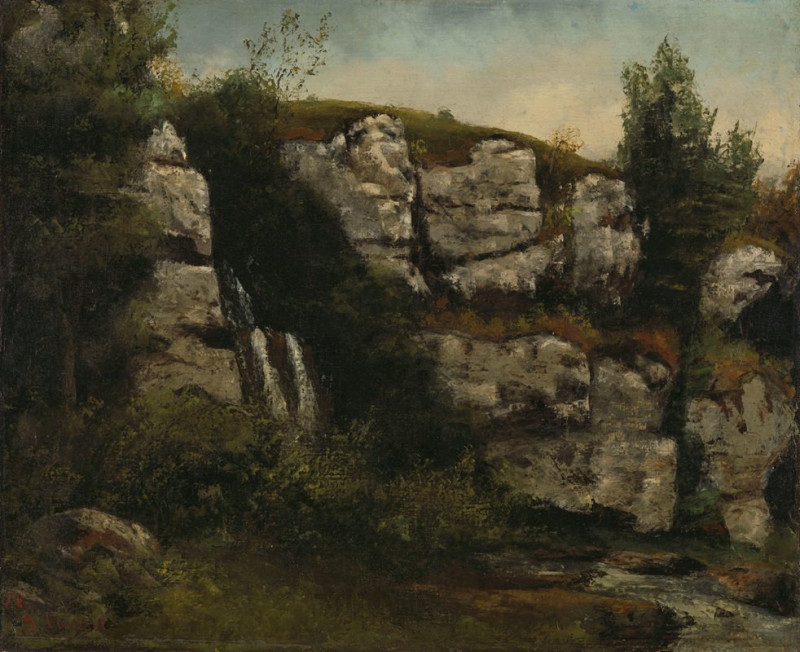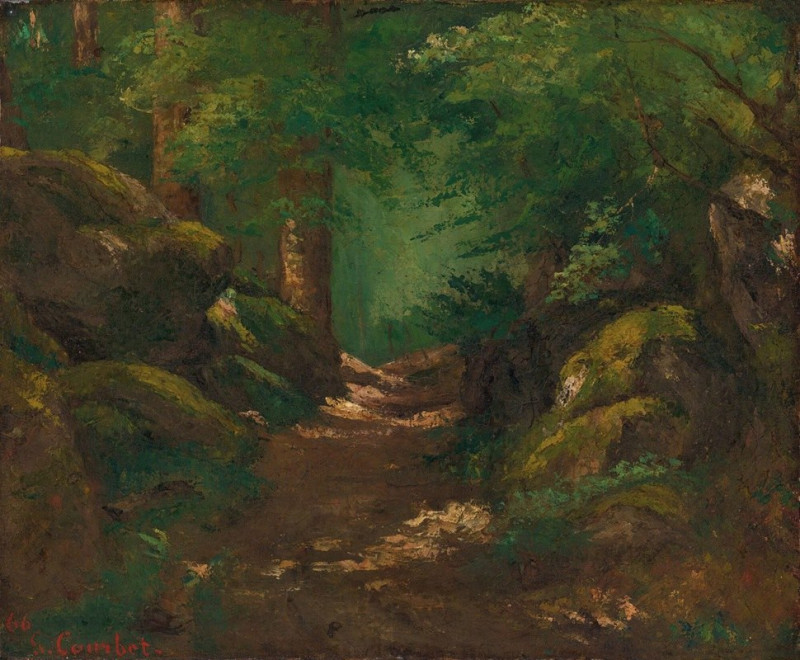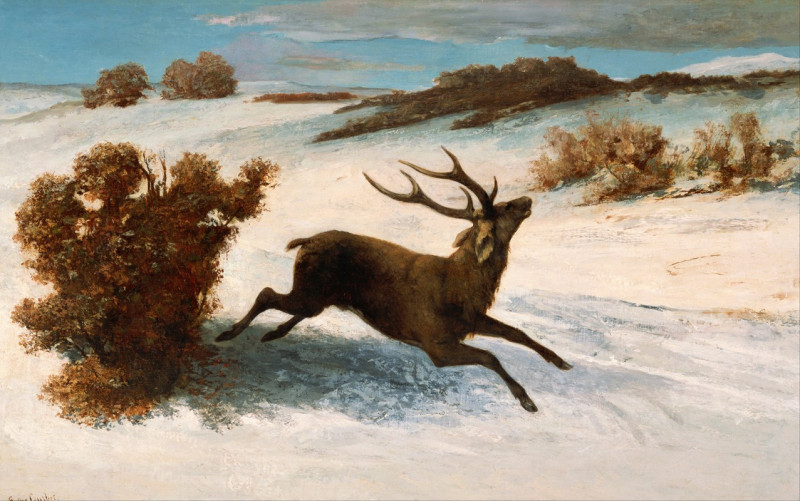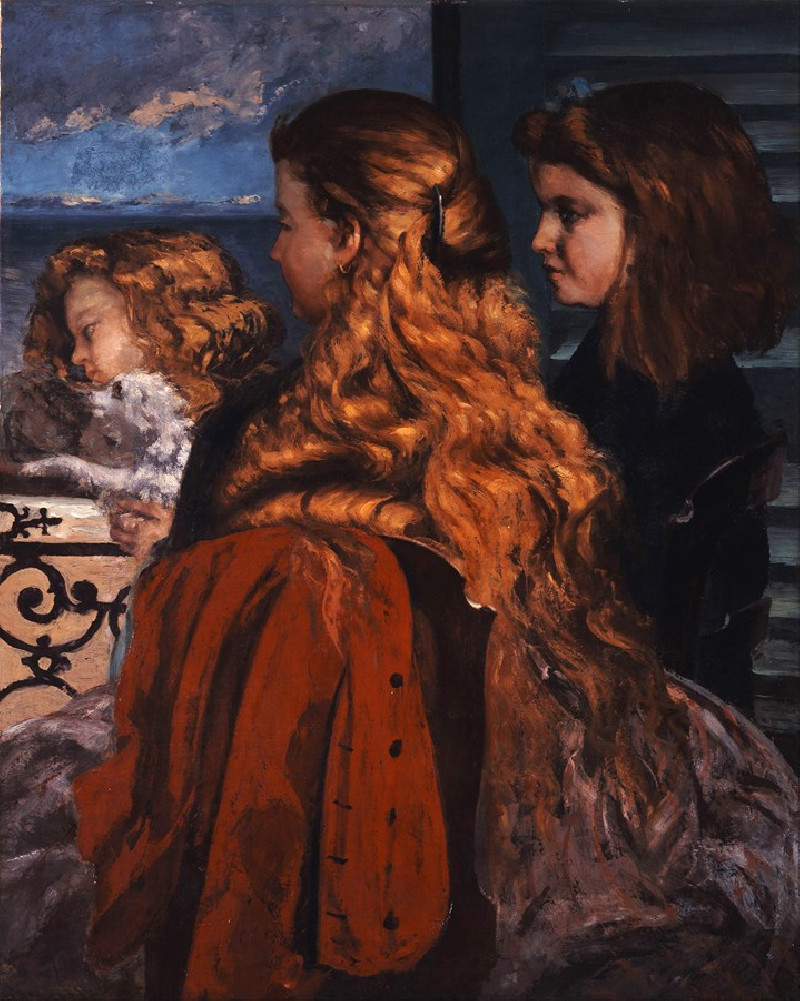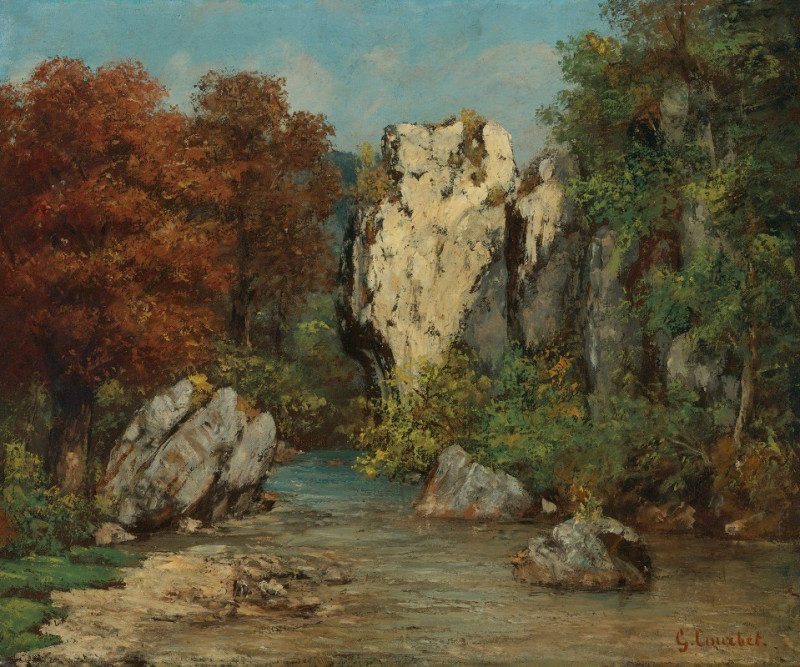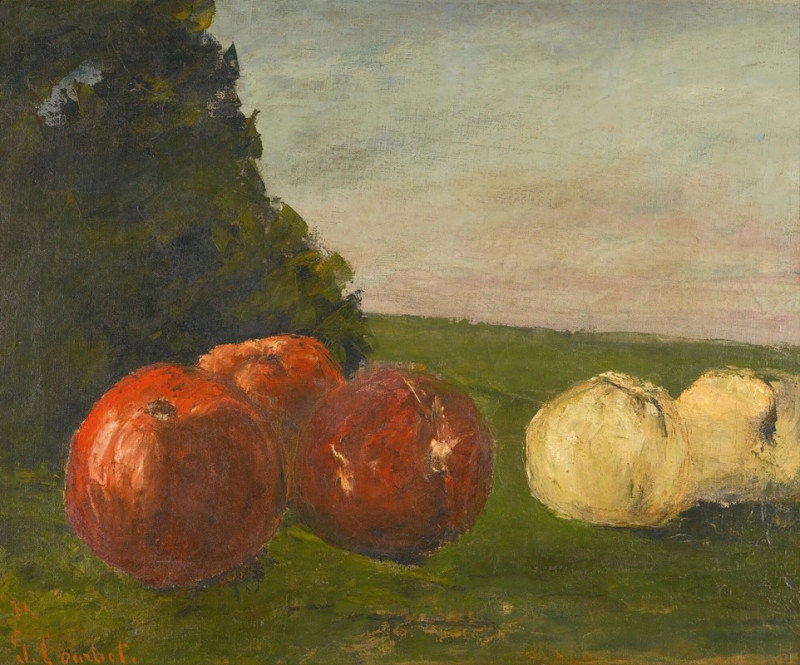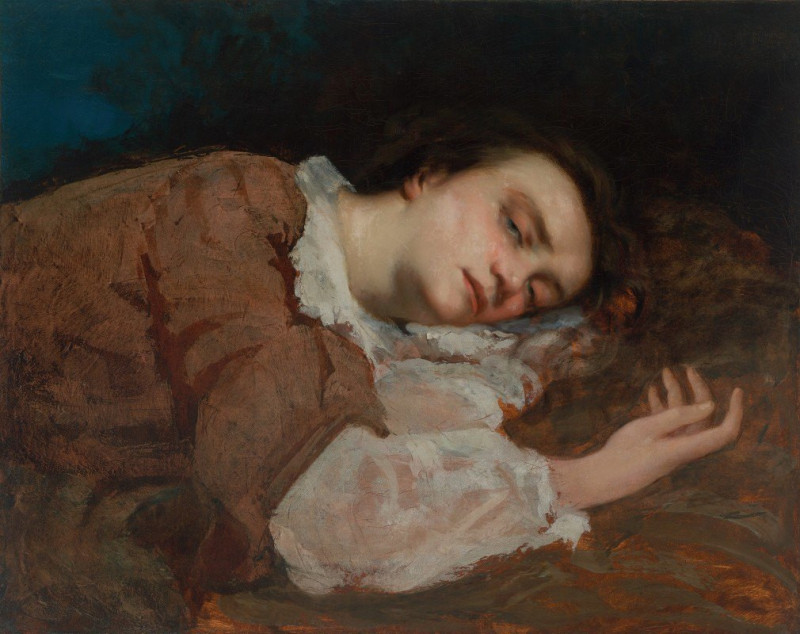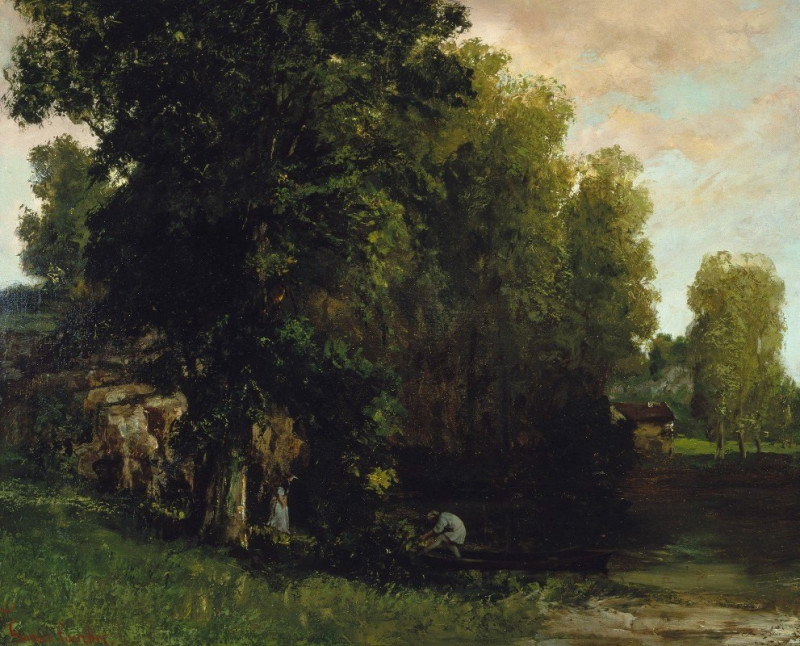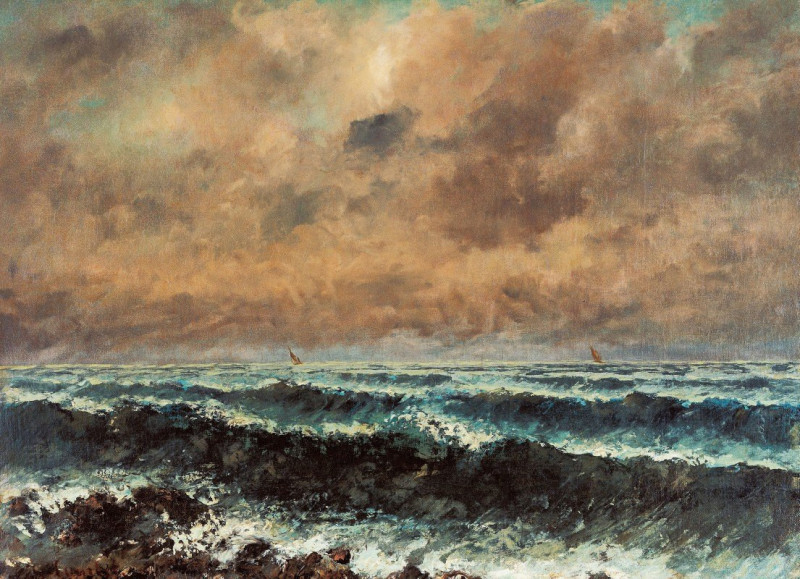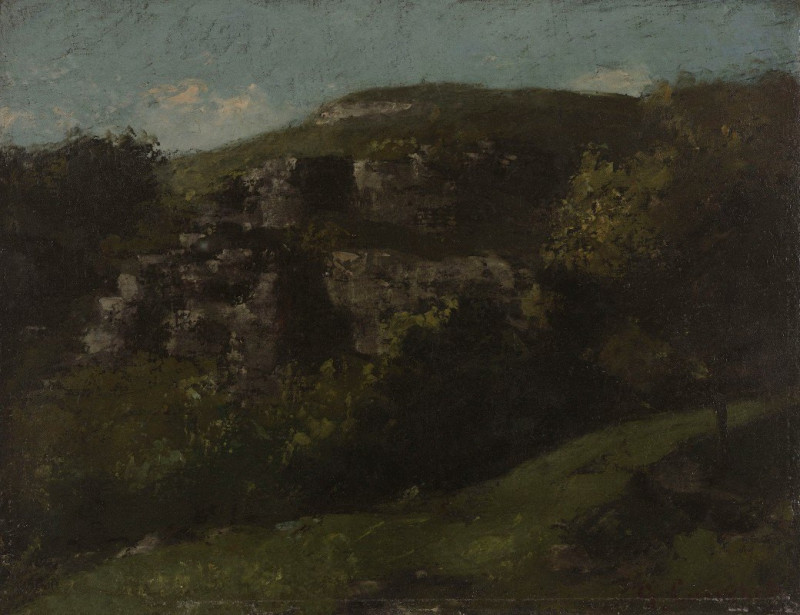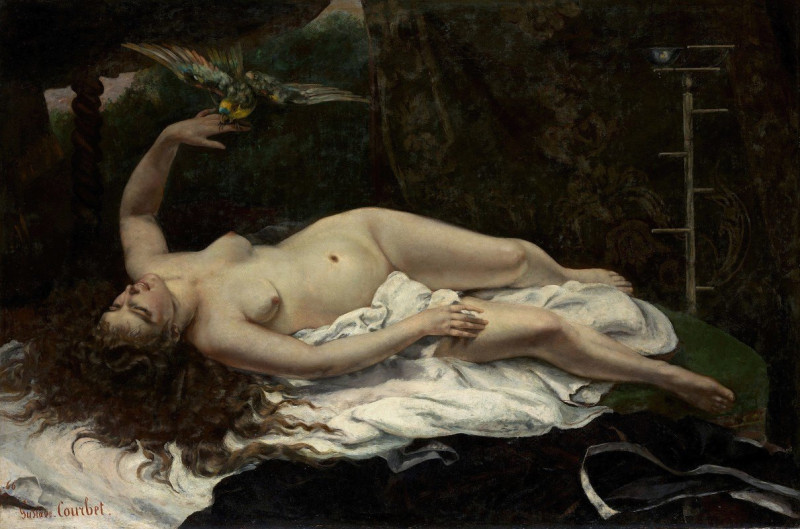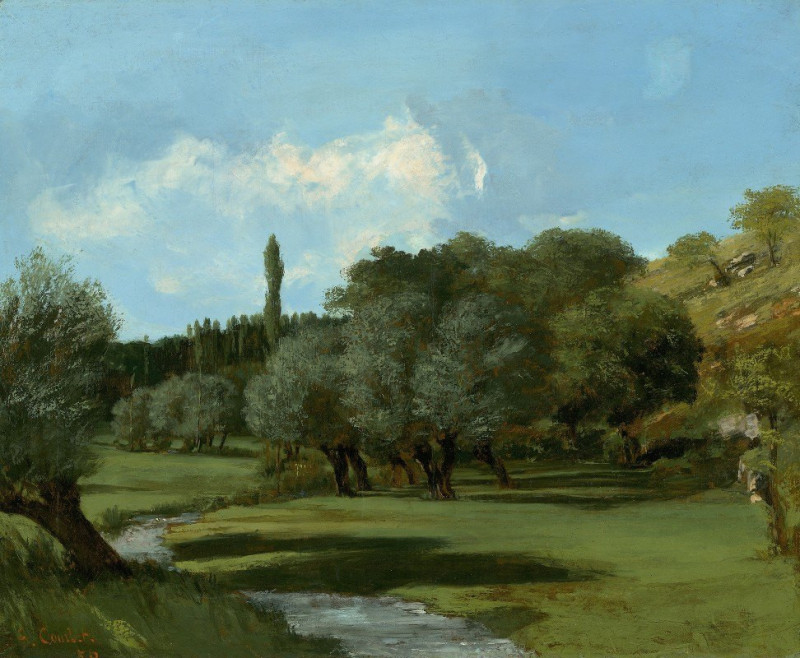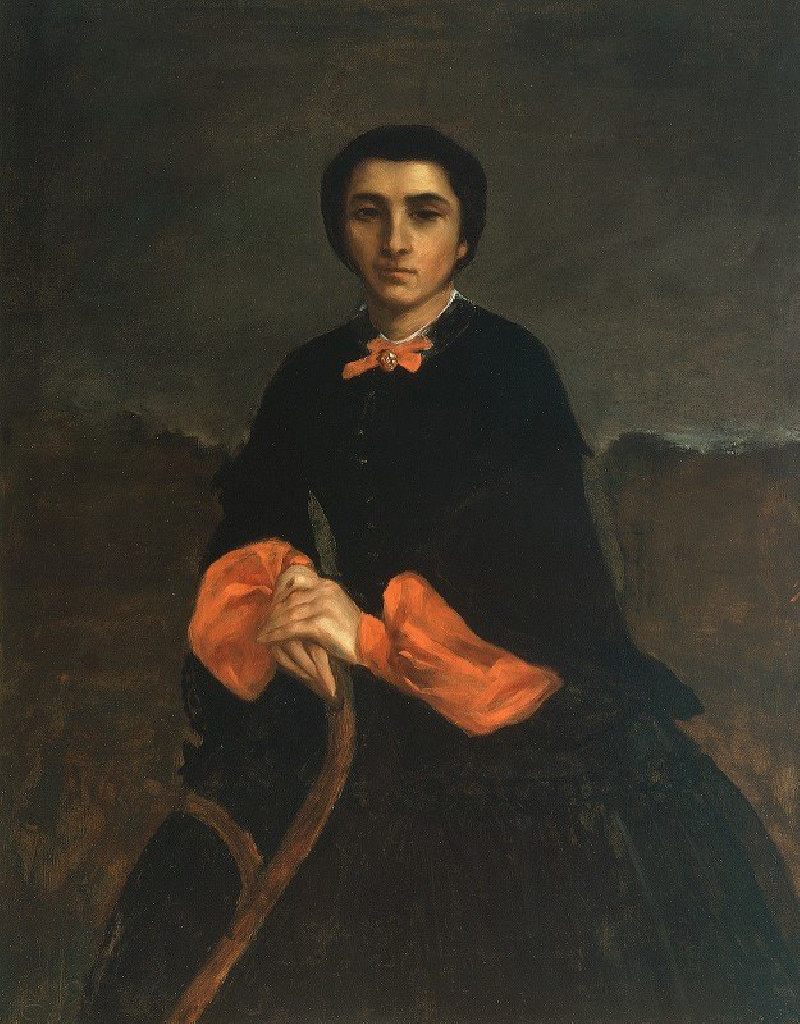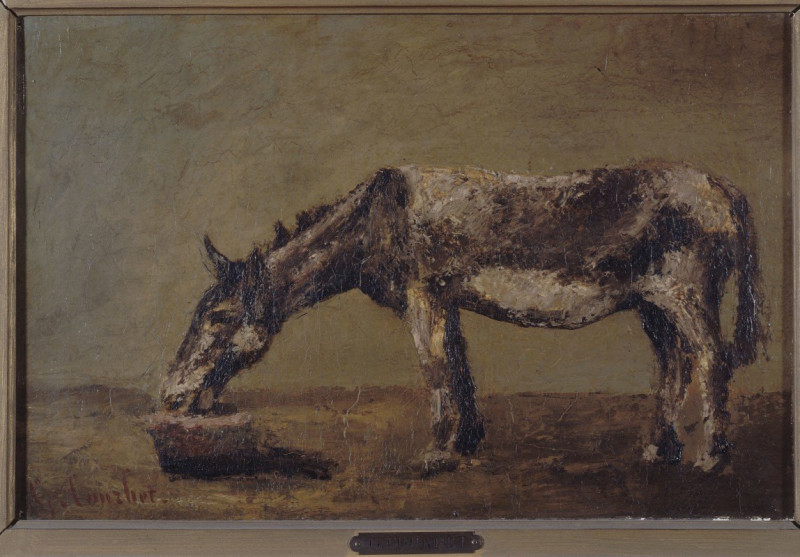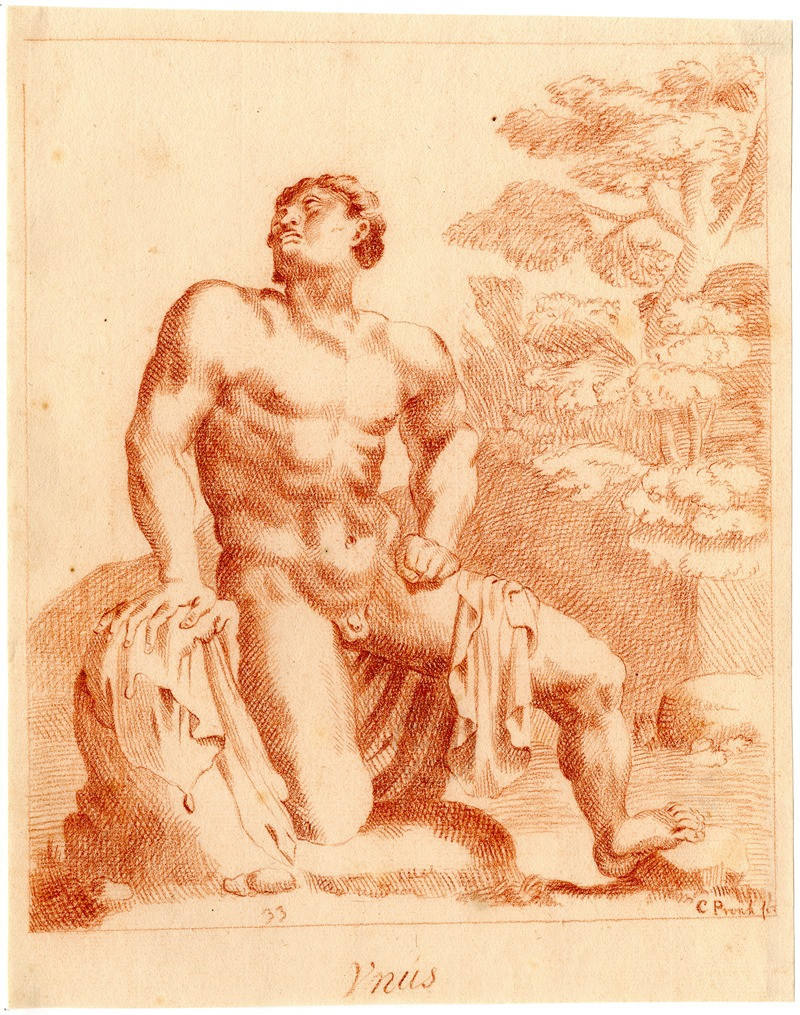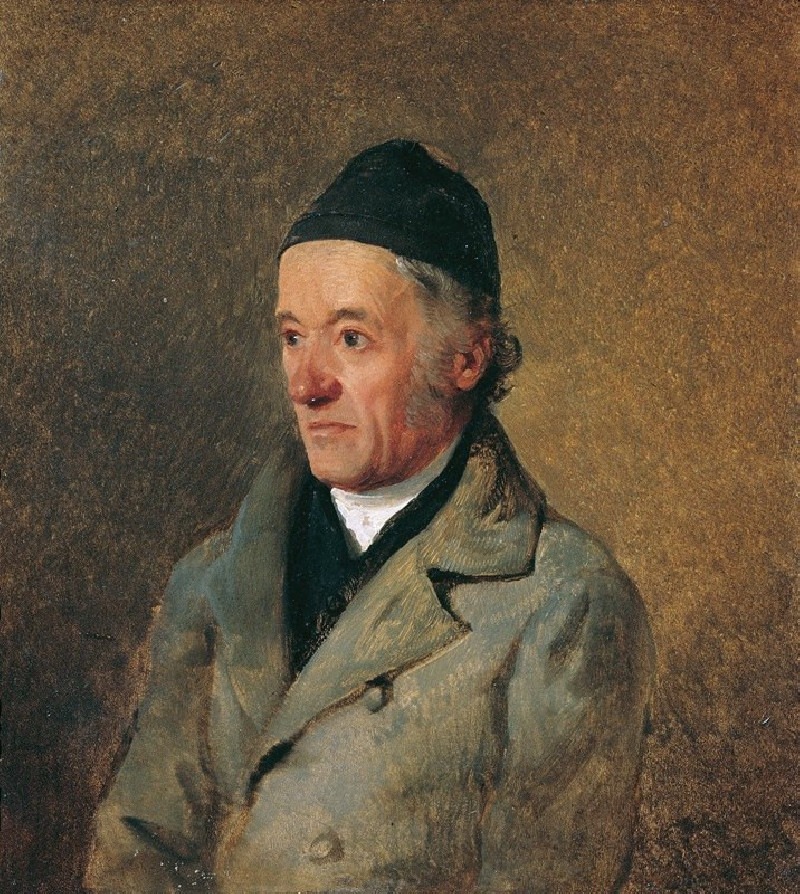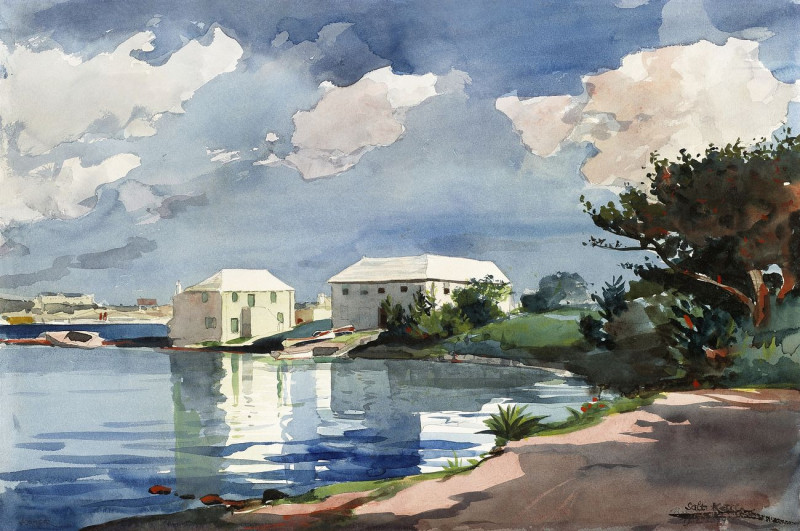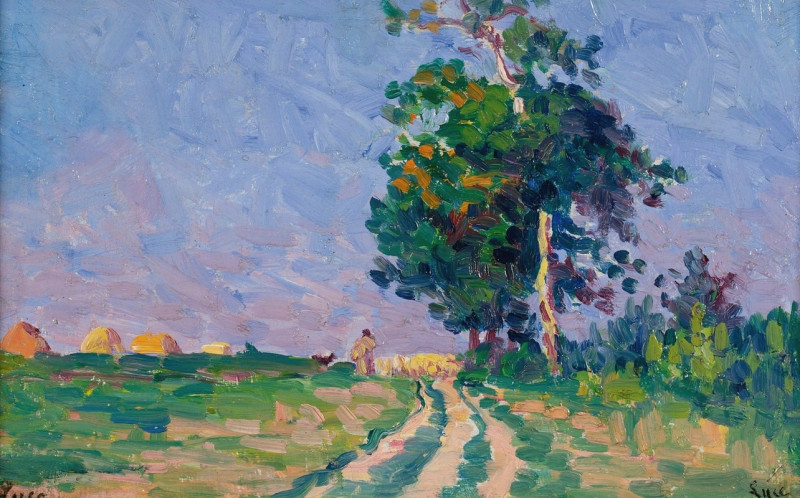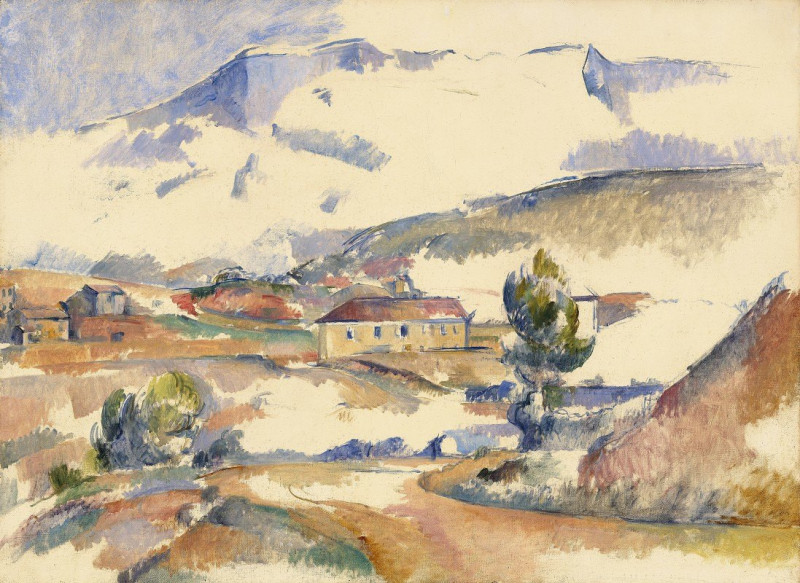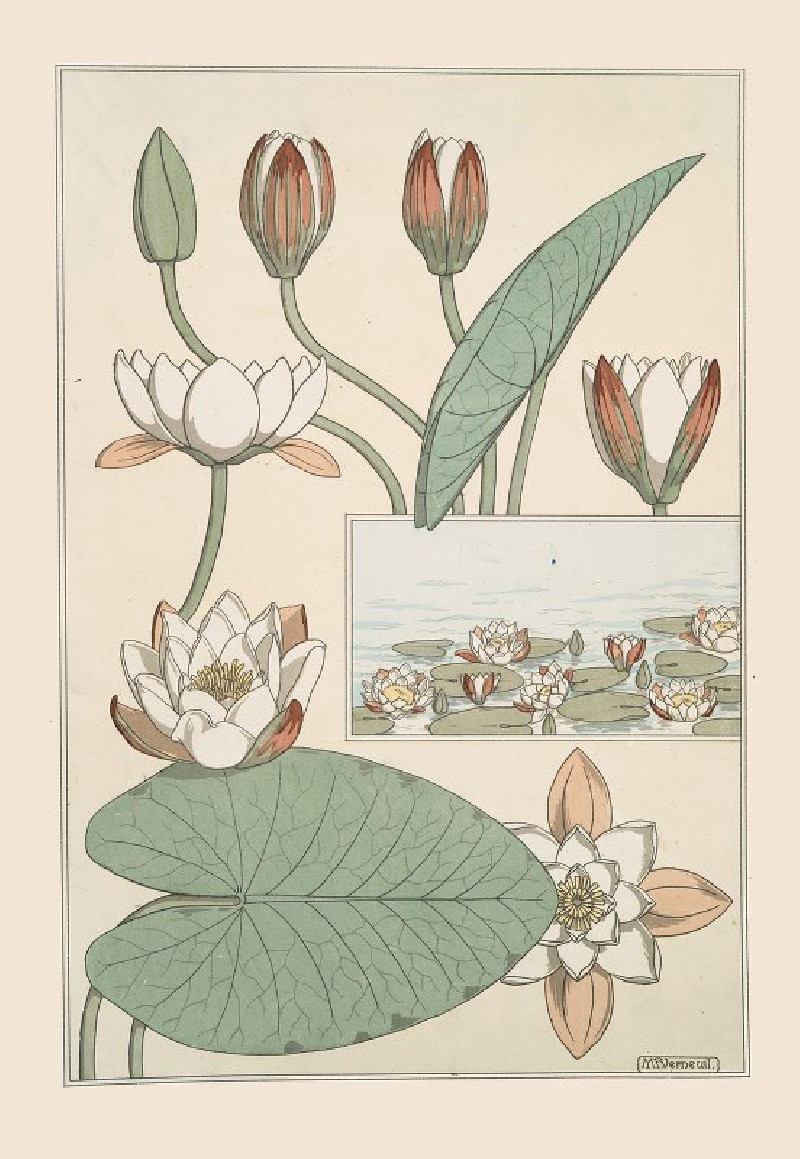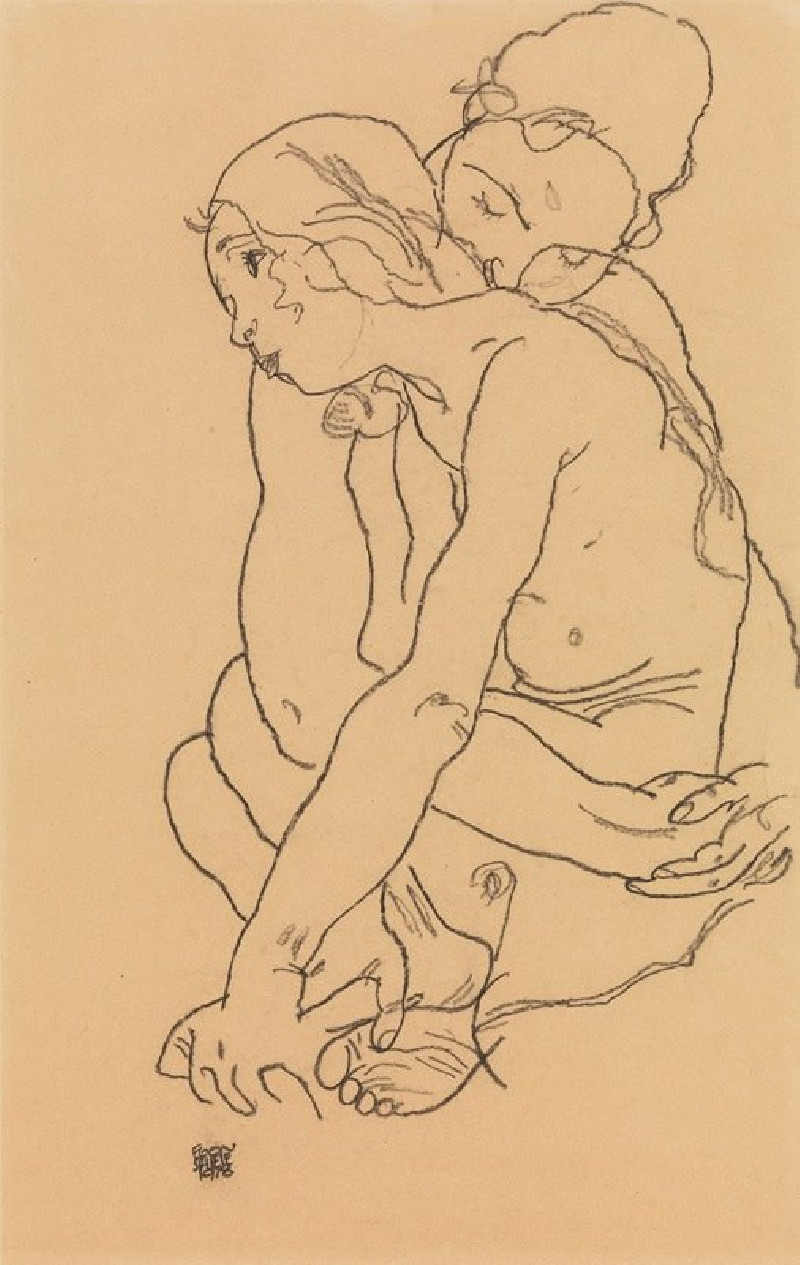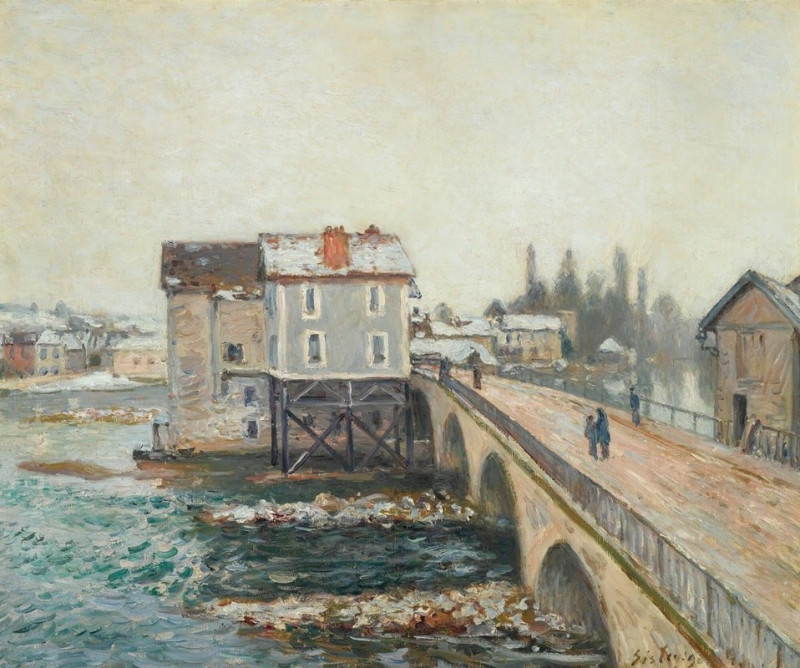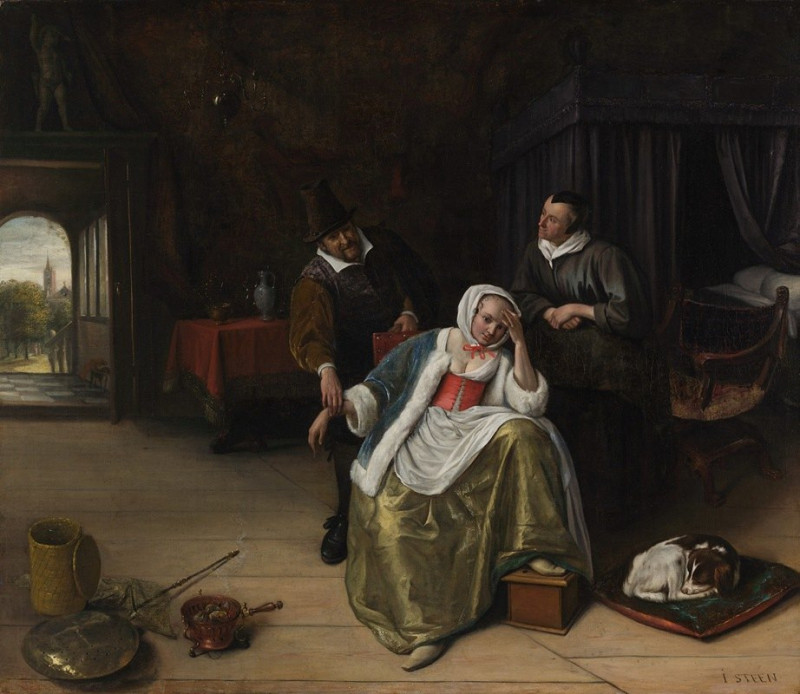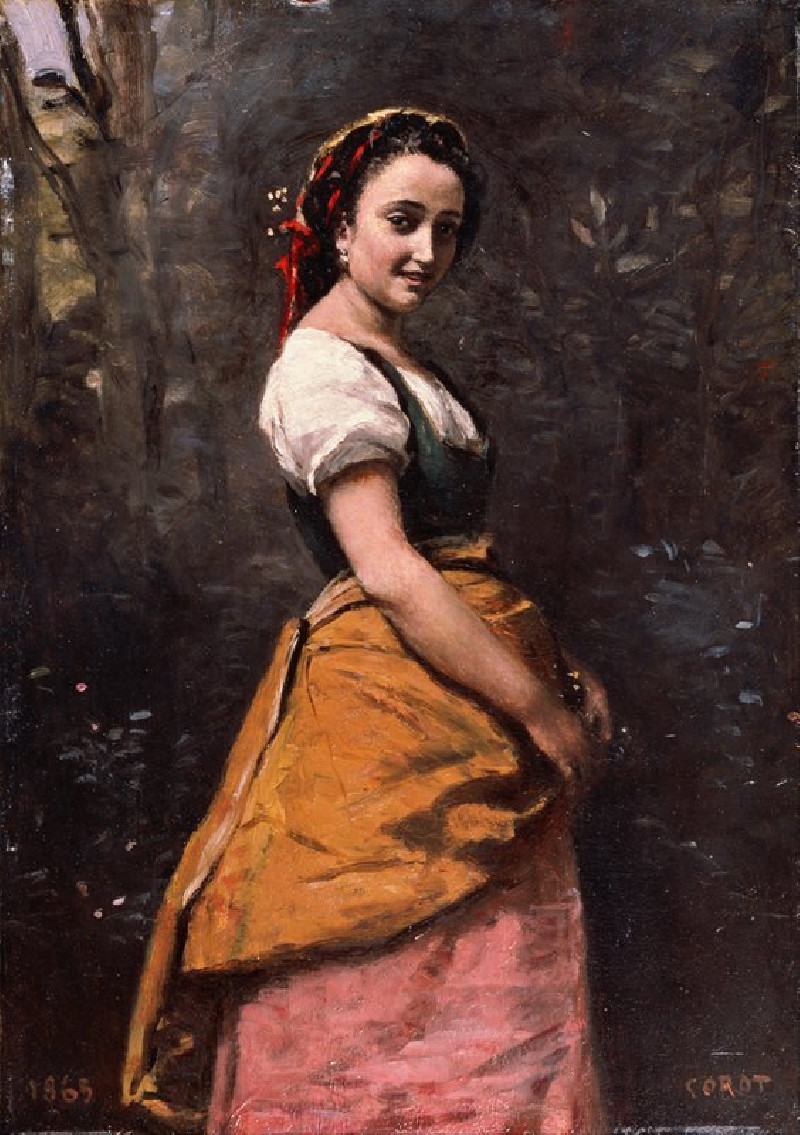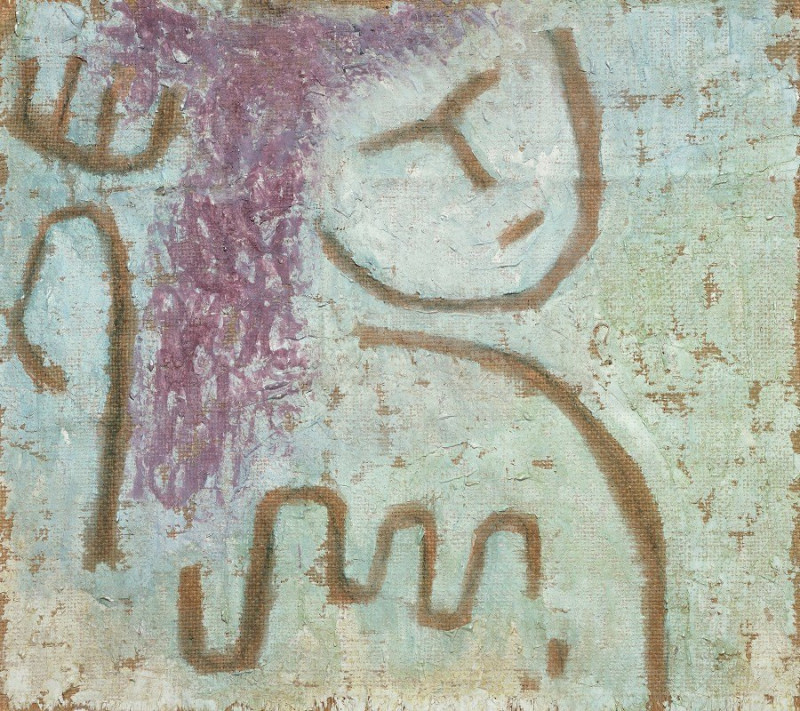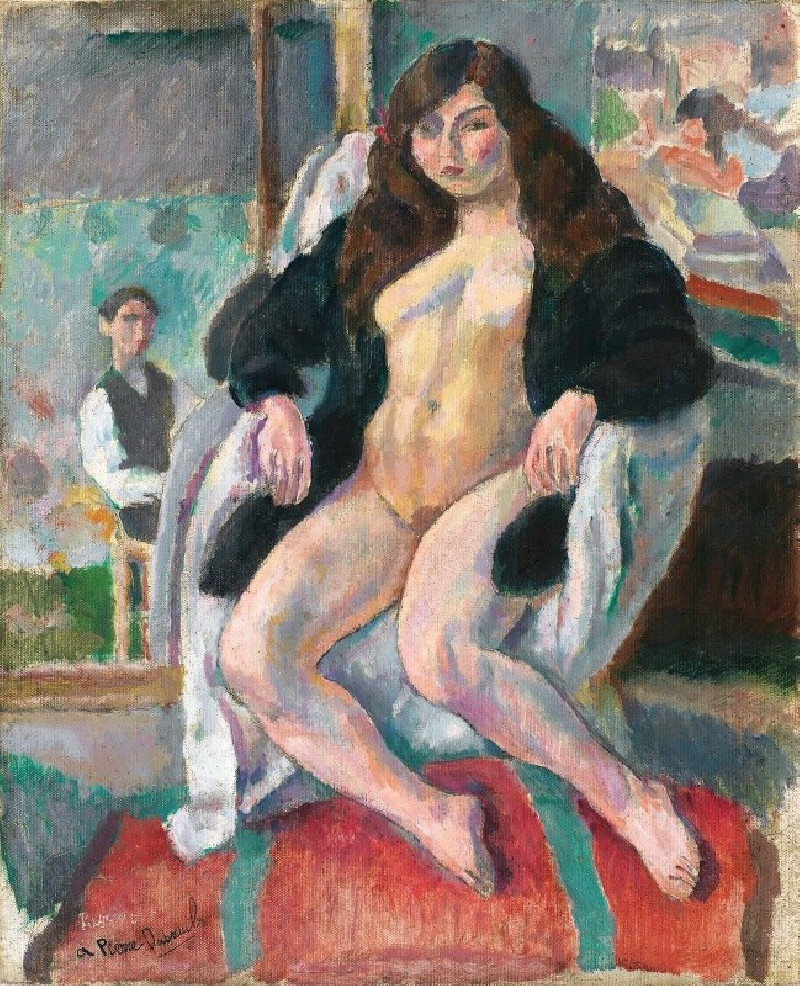Porteuse De Fagots Dans Un Paysage De Neige
Technique: Giclée quality print
Recommended by our customers
More about this artwork
"Porteuse De Fagots Dans Un Paysage De Neige," painted by the illustrious French artist Gustave Courbet, captures a serene, yet powerful, winter scene infused with a sense of everyday struggle and natural beauty. This evocative painting portrays a solitary figure traversing a snowy landscape, burdened with a bundle of firewood collected against the cold season. The muted palette consists of whites, grays, and earthy browns, bringing out the chill and solitude of winter, while contrasting with the occasional warm hues of the autumnal foliage half-buried under the snow.The setting is a pastoral one, illustrating a humble wooden hut nestled amid a snowy backdrop, surrounded by bare winter trees and rocky terrain. The structure, partially covered with snow, appears both inviting and isolating, reflecting the harsh realities and the simplicity of rural life.Gustave Courbet's use of textured brushwork lends a tactile quality to the snow and foliage, making the cold tangible to viewers and emphasizing the ruggedness of the environment. The figure in the painting, modest yet resilient, symbolizes perseverance and the endurance of the human spirit against the elements.This work is a superb example of Courbet's skill in rendering naturalistic landscapes and his empathy for the working-class individuals who frequently inhabit them, making "Porteuse De Fagots Dans Un Paysage De Neige" not only a visual masterpiece but also a profound commentary on human life and nature.
Delivery
Returns
Jean Désiré Gustave Courbet (10 June 1819 – 31 December 1877) was a French painter who led the Realism movement in 19th-century French painting. Committed to painting only what he could see, he rejected academic convention and the Romanticism of the previous generation of visual artists. His independence set an example that was important to later artists, such as the Impressionists and the Cubists. Courbet occupies an important place in 19th-century French painting as an innovator and as an artist willing to make bold social statements through his work.

